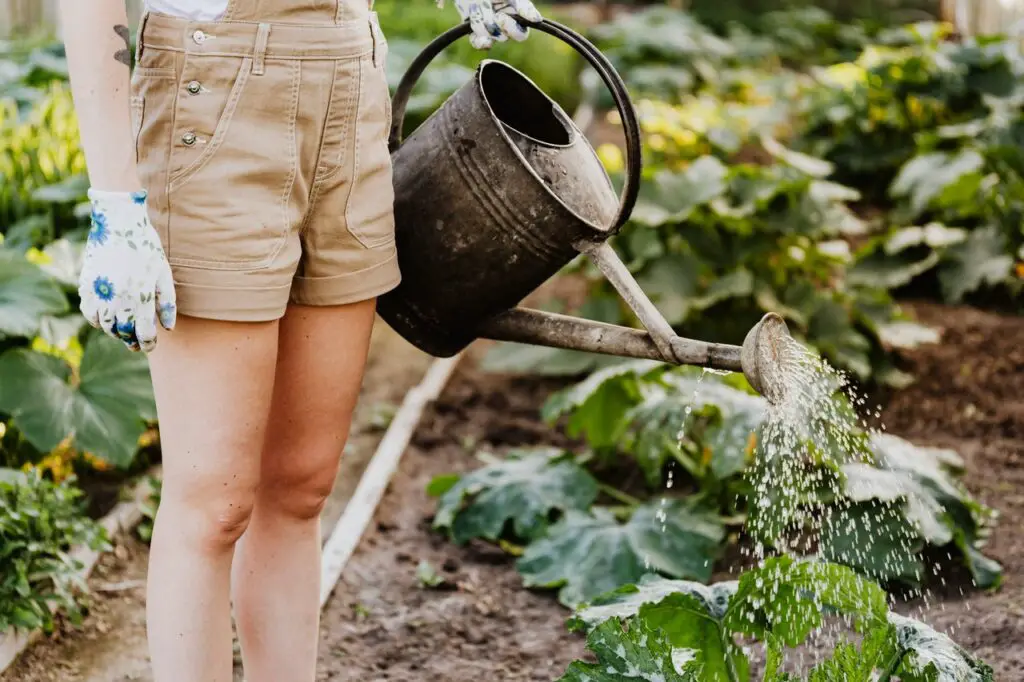The best water-absorbing plants for the yard are useful if your area floods easily or if you happen to have a spot that just doesn’t dry out too well. These trees, shrubs, and plants love moisture-rich soil and will be of tremendous help for those places in the landscape prone to poor drainage.
These water-absorbing plants are also excellent if you plan to construct a rain garden.
Table of Contents
Thirsty Plants That Help Absorb Plenty of Water

If you have a section of your landscape that seems to collect stormwater runoff consistently, the area will benefit from having water-absorbing plants installed. You can often find such spots at the base of a sloping area or in a depressed zone, and it would be helpful to place plants in those areas to tidy up the site while also soaking up the extra water.
Plants are nature’s water filters and have been cleaning the earth’s water since the beginning of the planet. We need to take advantage of the incredible power of plants to filter our water by adding more and more lush green plants to our landscapes whenever possible. That wet spot in the backyard is the perfect spot for a few water-absorbing plants.
Shrubs That Like Being Hydrated
Take advantage of these water-loving shrubs to build a visually stunning landscape that does not suffer from water runoff problems.
American cranberrybush (zones 2-7)
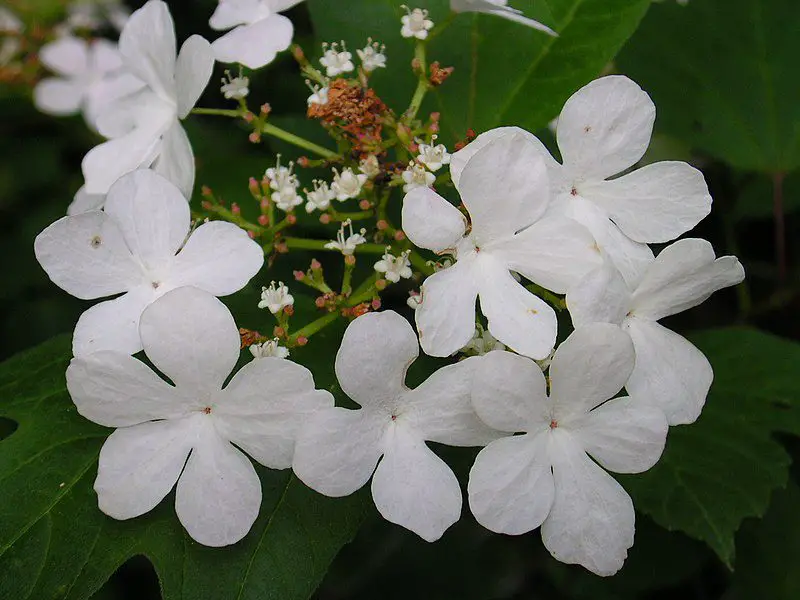
American cranberrybush can take on a fully branched, thick shape. It’s got stunning orange-red fall foliage and vibrant red fruits.
Buttonbush (zones 6-9)
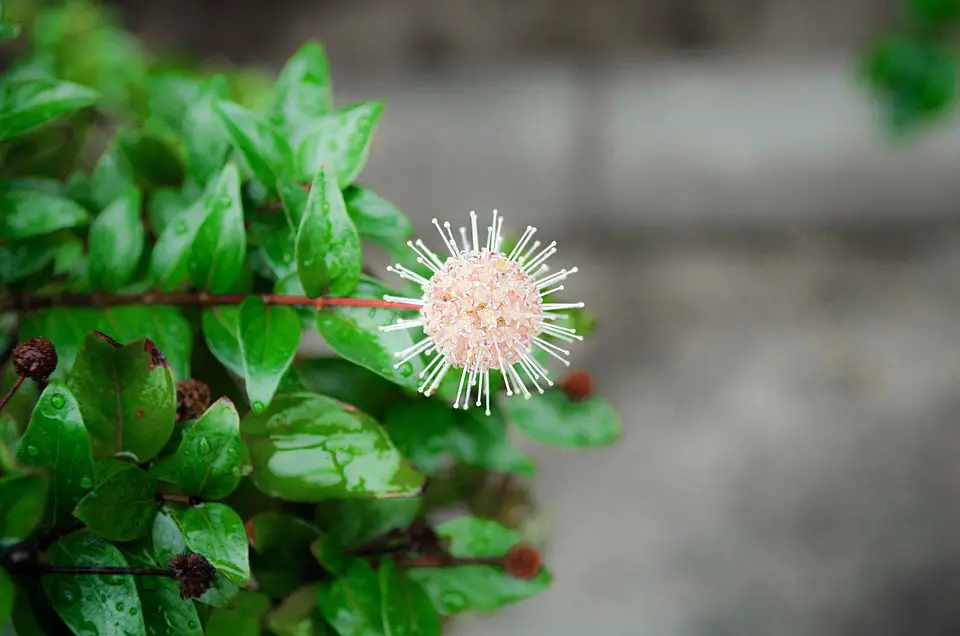
Buttonbush is an excellent plant you can rely on to beautify wet areas. Aside from its pretty, scented, white flowers, you’ll also like its attractiveness to birds and butterflies.
As buttonbush never survives drought, it will require more watering in brightly sunlit places that could run dry. This makes it a perfect water-absorbing plant for the yard.
Blue elderberry (zones 3-10)
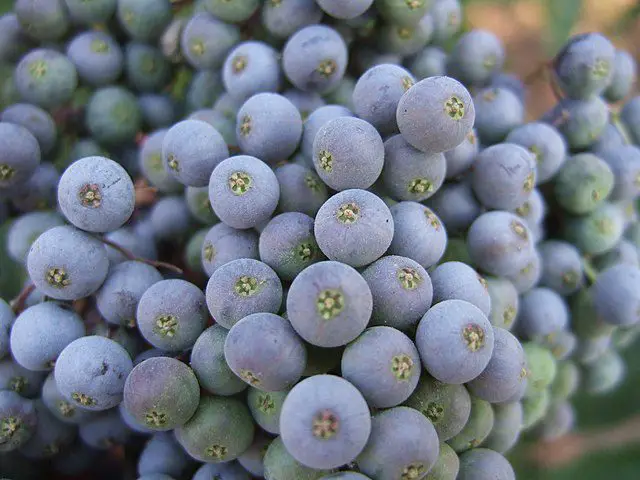
Elderberries have been eaten for sustenance in Europe and the United States for centuries, and they were also well-used for their health benefits in ancient Greece and Rome.
Black chokeberry (zones 3-8)
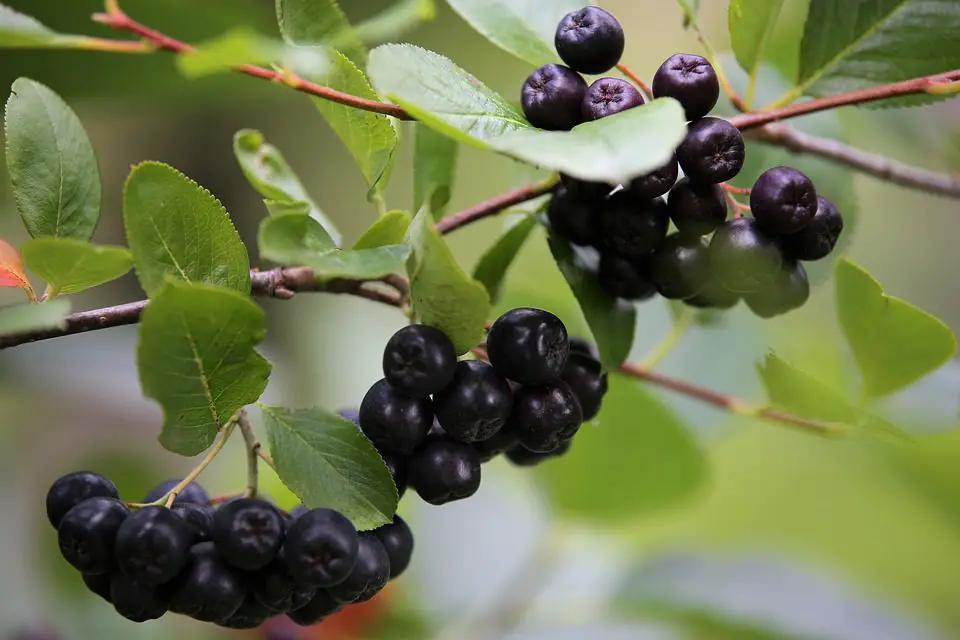
The Black Chokeberry benefits the ecosystem by supplying berries for wildlife to consume and refuge and nesting spaces for tiny creatures. Meanwhile, its blooms are excellent food sources for pollinators.
Pussy Willow (zones 4-8)
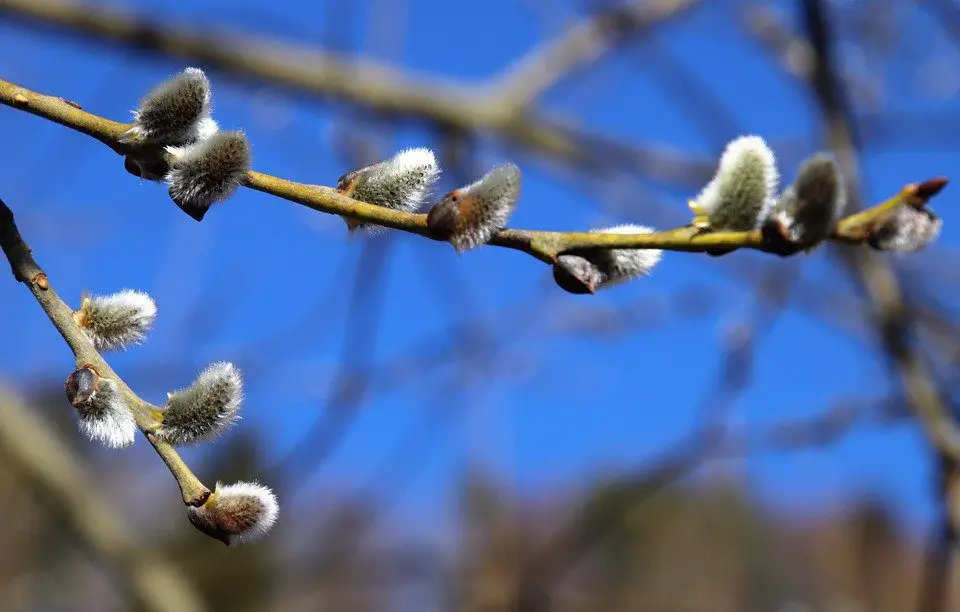
Throughout its distribution, pussy willow grows near rivers, coastal areas, swamp edges, and the low-lying regions of water-logged brambles, fields, sloughs, and woodland open spaces. Thus, it will certainly absorb any excess moisture that comes its way.
Trees That Thrive With Lots Of Water
Weeping Willow (zones 4-9)
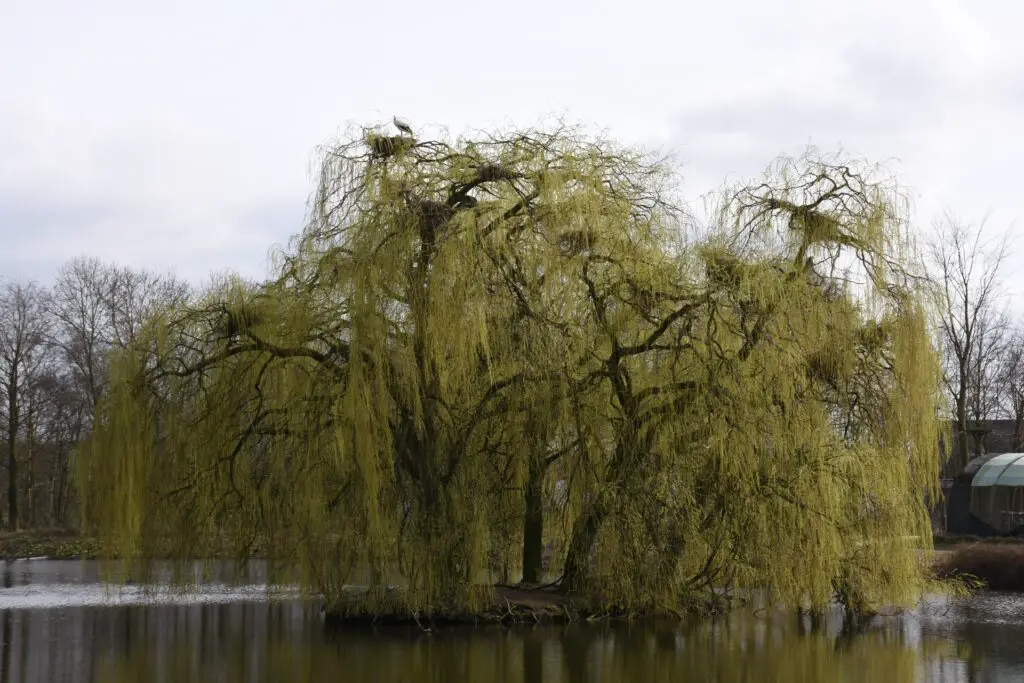
The weeping willow tree has long been a staple of the moist banks of rivers and ponds, and this is a fast-growing tree that thrives in moist soils.
Bald cypress (zones 5-9)
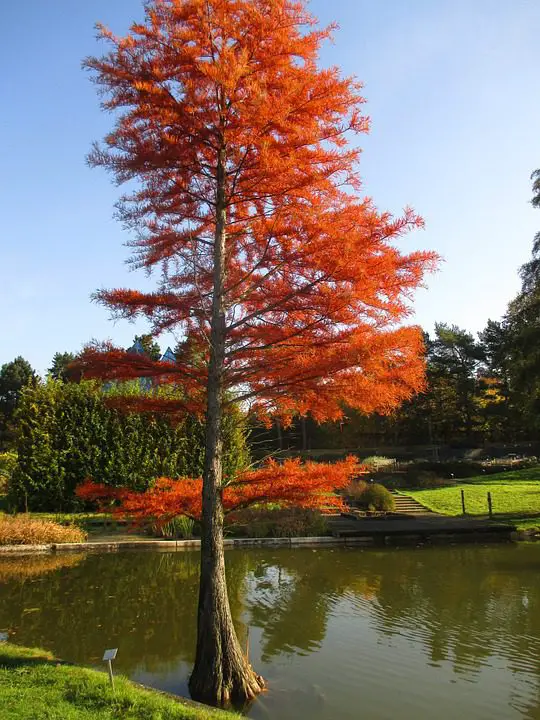
Taxodium distichum likes being in wet places. This tree will be stunning as a specimen tree for areas with moisture-rich soil. However, that’s not to say it’s not adaptable; it can also survive in drier conditions.
Black gum (zones 4-9)
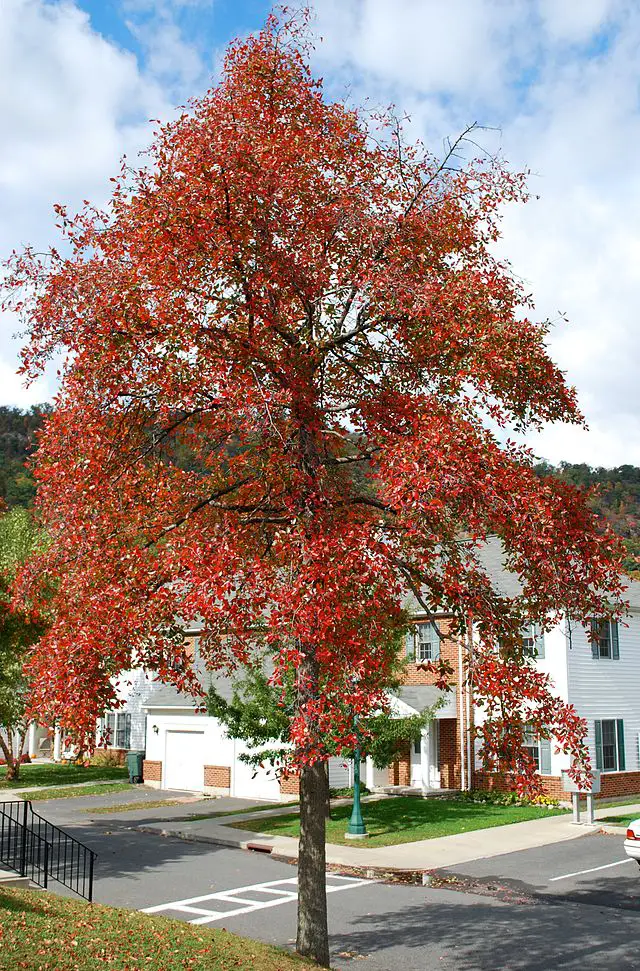
Nyssa sylvatica’s affinity to moisture makes it a very attractive choice for lowland gardens. This plant with beautiful red/orange fall foliage is extremely important to wetland fauna. Its white blossoms are an important source of honey for pollinators, and its fleshy fruits supply nourishment to wildlife.
Red maple (zones 3-9)
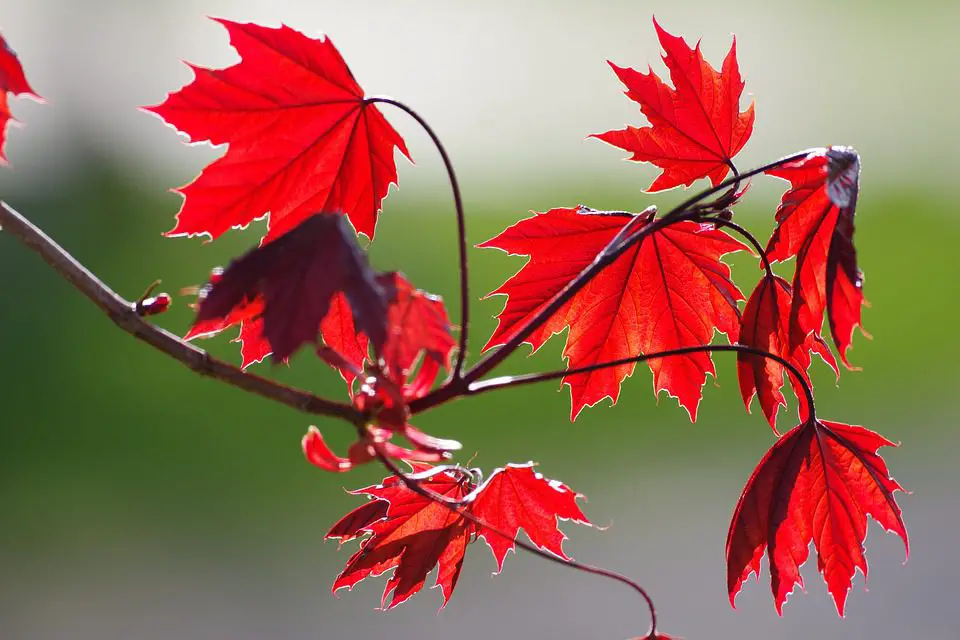
Acer rubrum is most recognized for its spectacular autumn show of colorful foliage. Red maple trees may be productive rainwater absorbers in several habitats because they tolerate a wide range of soil types. Yet, it prefers wet, mildly acidic, rich soil. A single red maple tree may consume up to 10 gallons of water per week.
River birch (zones 4-9)
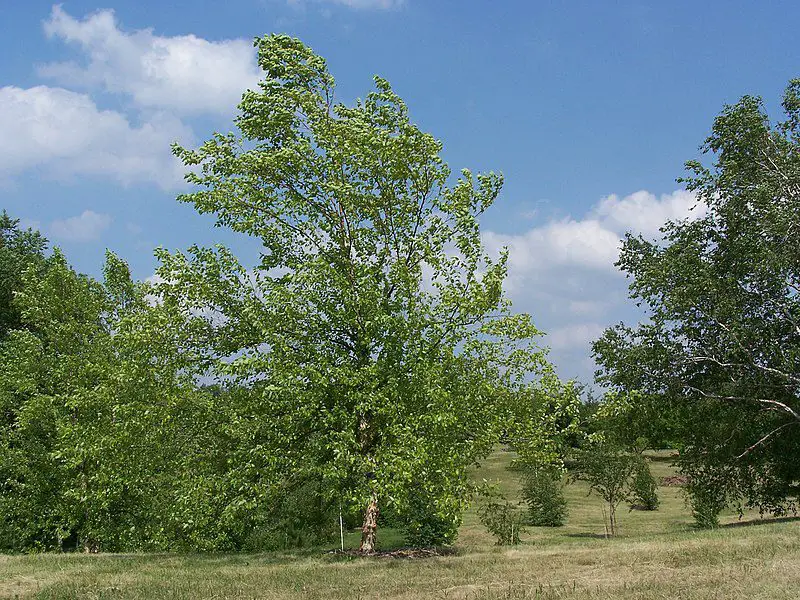
Betula nigra thrives in wet regions like swamps, ponds, and river valleys. It’s also known as water birch since its roots can withstand being planted in a water source or a moderately aquatic environment. If you have a yard with less-than-ideal drainage, the river birch tree will thrive in the constant wetness.
Water-Absorbing Plants
Primrose (zones 3-8)
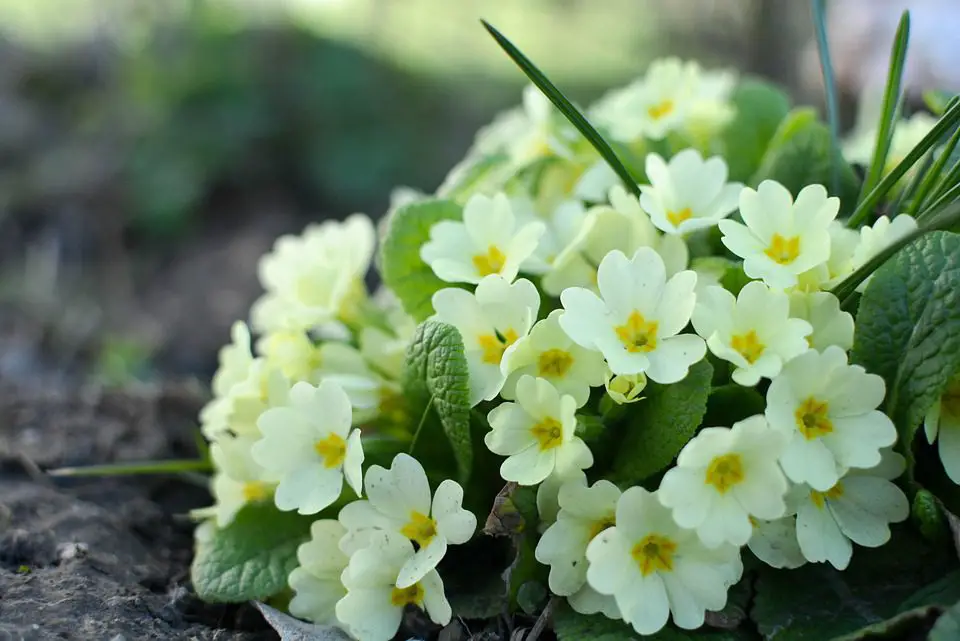
Waterways, shrubbery, and open, humid, deciduous woods are the most common places to find primrose.
Daylilies (zones 4-9)
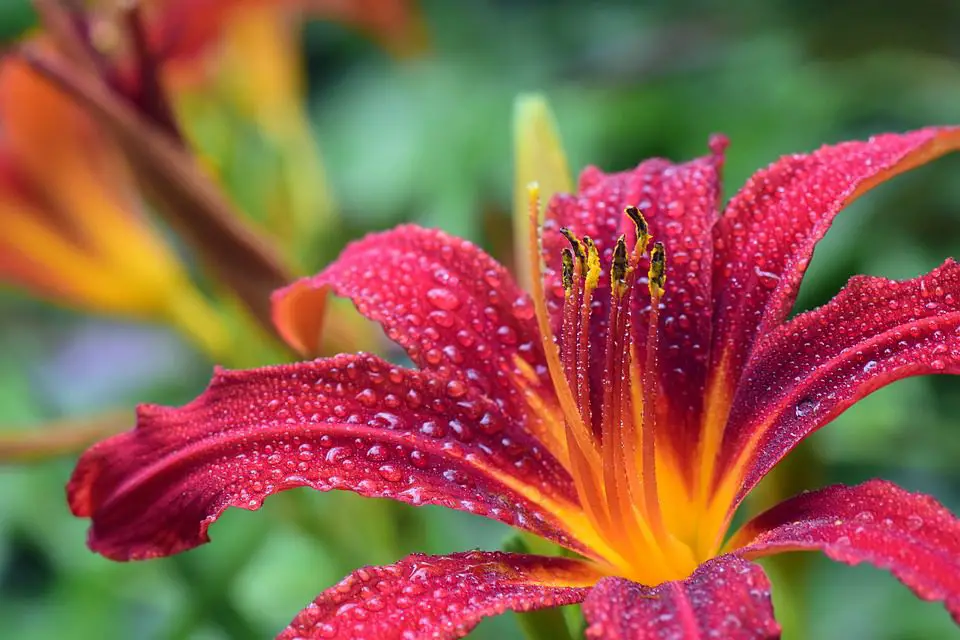
These flowers are attractive, low-maintenance, and incredibly resilient. They do well in the absence of human intervention. Because they soak up lots of water, you must give them plenty of moisture. Or place them in damp sites in the landscape.
Swamp hibiscus (zones 7-10)
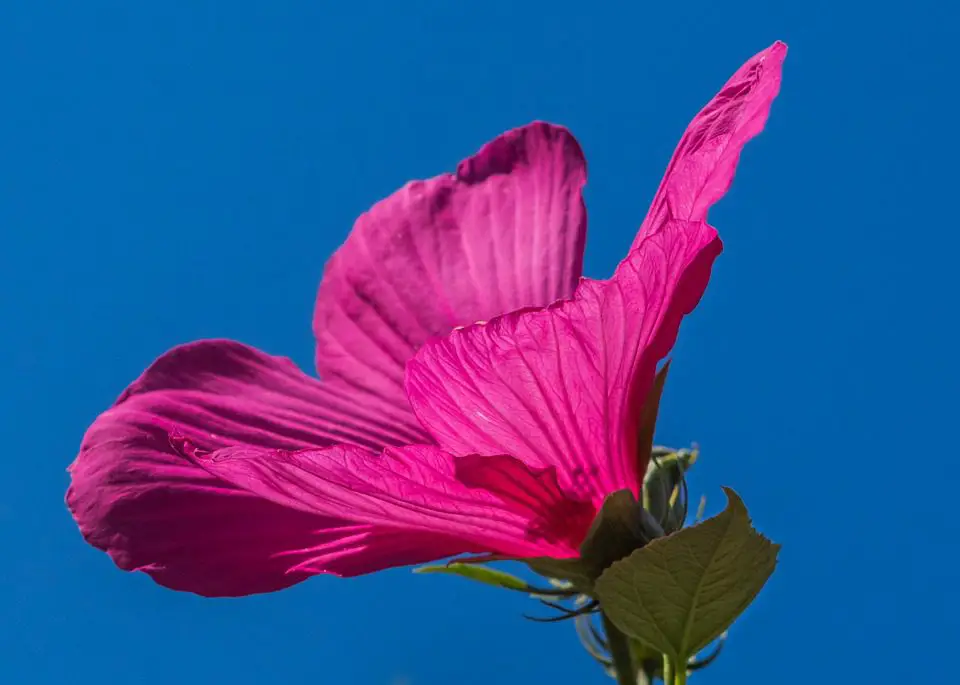
Japanese iris (zones 4-9)
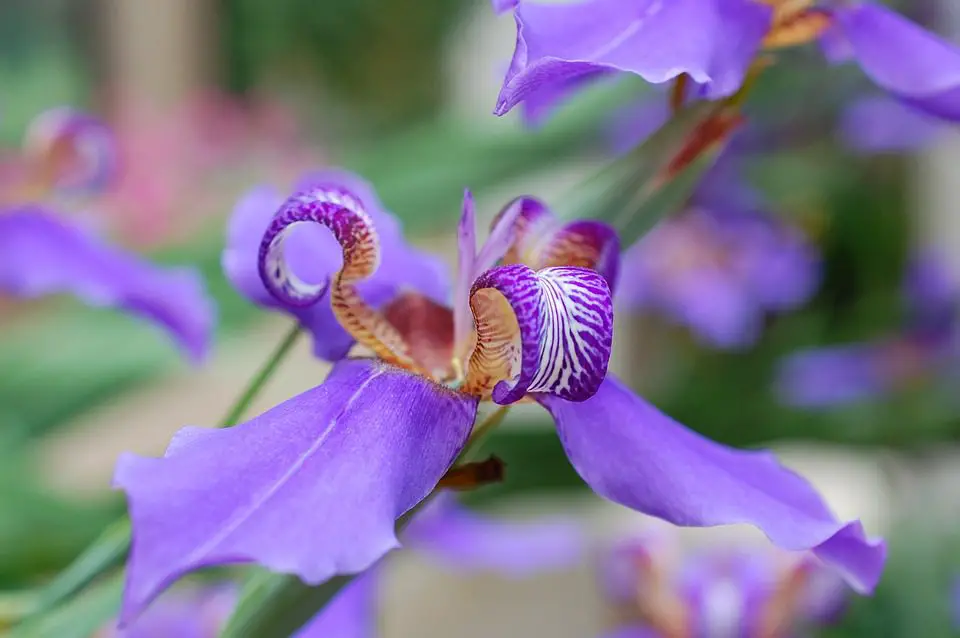
Iris laevigata is already a low-maintenance perennial, but its preferred environment is wet.
It’s nice to position the Japanese iris close to the edge of a standing water source. The roots may grow in moist, acidic, rich soil, although they don’t like their roots to be submerged in water in the winter.
Globeflower (zones 3-7)
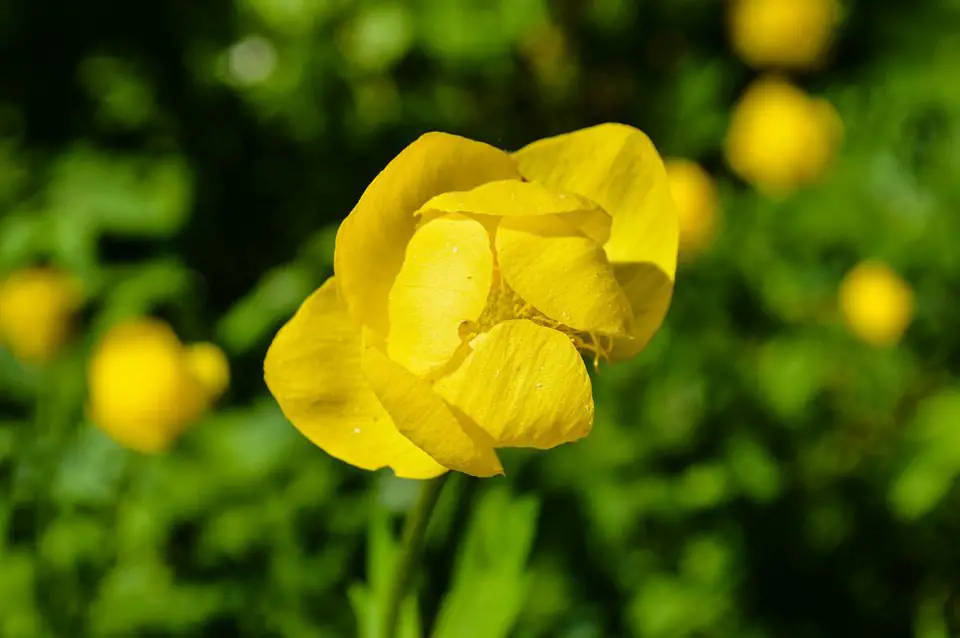
Trollius sp. is endemic to the northern hemisphere. This plant thrives in humid (or wet) environments with colder temperatures and dappled shade. They can withstand quite a bit of dirt, even clay).
Globeflower gets its name from its distinctively spherical buds, which can add a splash of warm color to your landscape with dazzling yellow and orange shades.
Leopard Plant (zones 7-10)
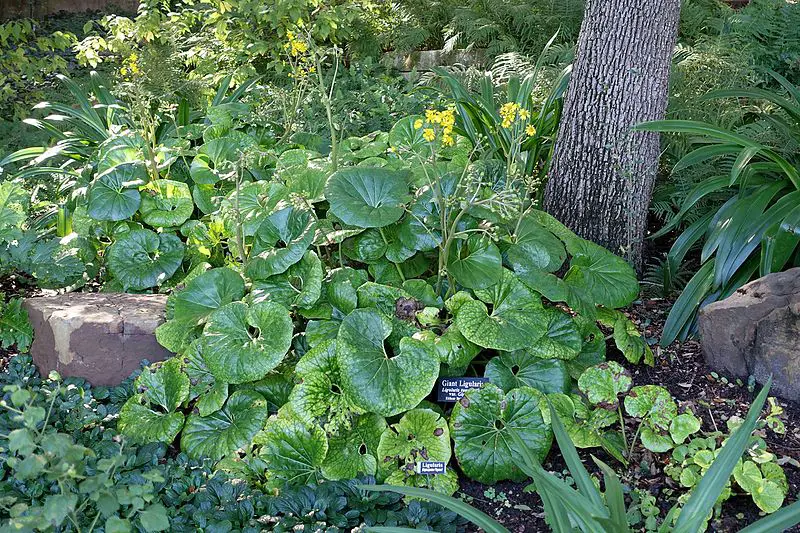
Farfugium grows well in moderate sunlight exposure to complete shade and loves damp, rich soil. It isn’t picky about pH. In our hot environment, the excessive sun can cause it to wilt, so it’s better to stay safe by giving it some shade.
Farfugium is adaptable to different soil types, but it needs constant hydration and can die if left to dry out.
Ferns (zones 2-10)
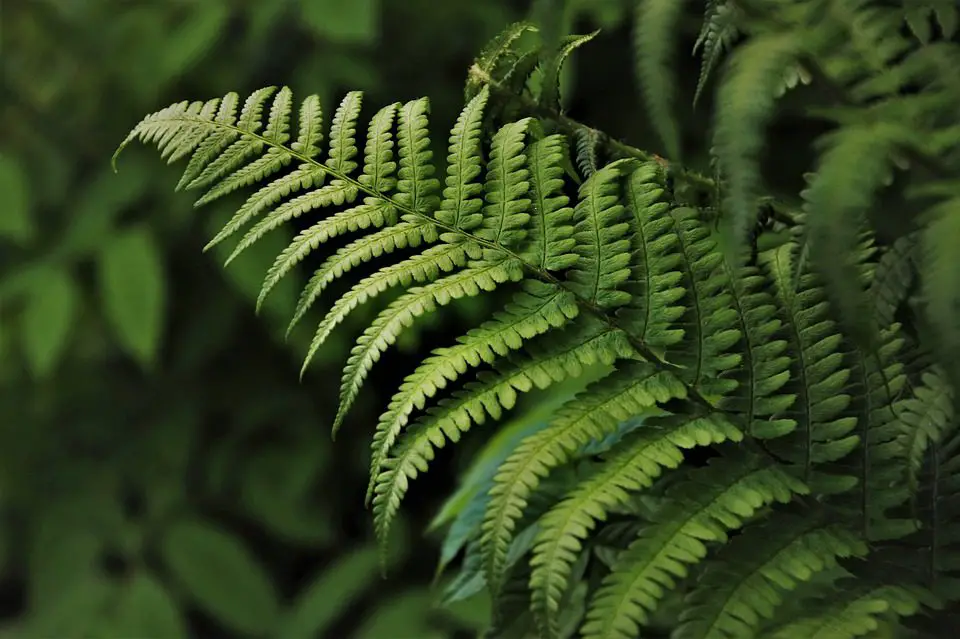
Several types of ferns can withstand high levels of wetness in the soil, and you can place them near ponds or in moist environments. Like the Christmas fern, certain ferns require shaded and dry conditions to grow.
Cattails (zones 3-10)
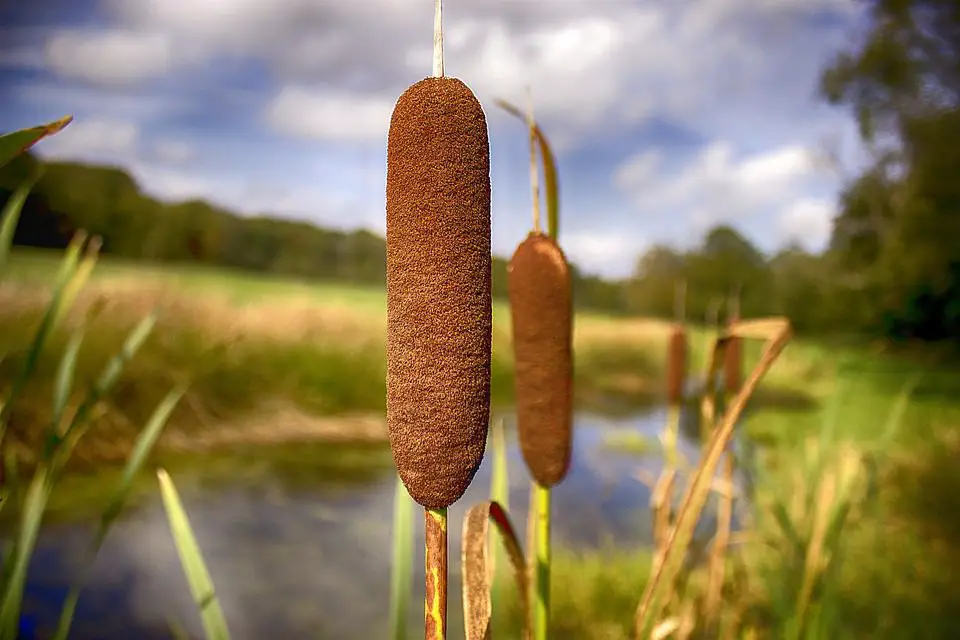
Aside from being fun to bite, Cattails are helpful yard plants if you need to deal with excess moisture. They are tall and have long leaves and “hotdog-on-a-stick” flowers, and you’ll usually see them in marshy areas.
Bee balm (zones 4-9)
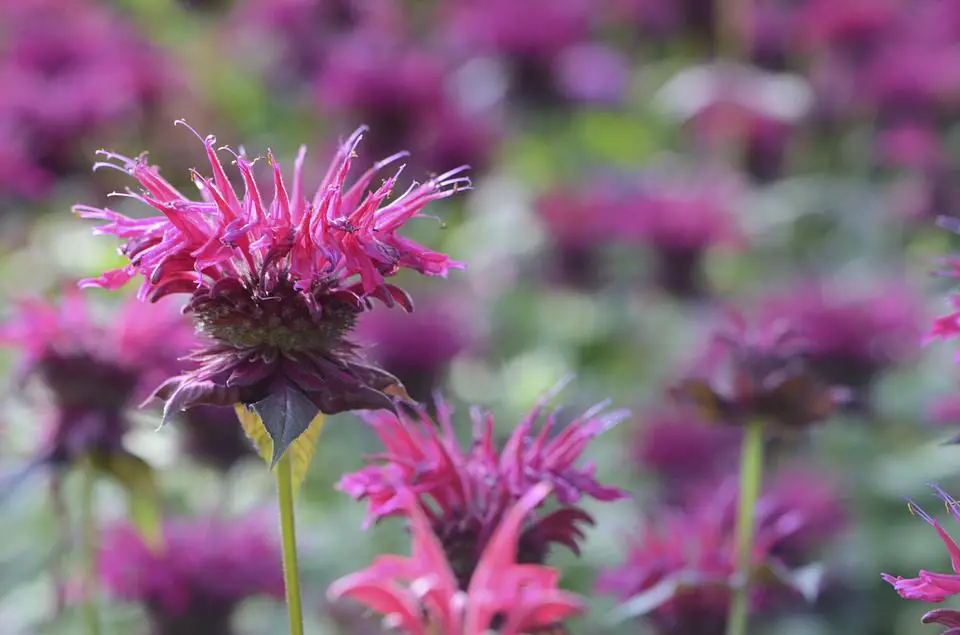
Monarda likes well-draining, damp soil. This stunning flowering plant is excellent for attracting bees (hence the name), butterflies, and birds.
During the growth season, bee balms like a steady intake of water.
French rose (zones 3-8)
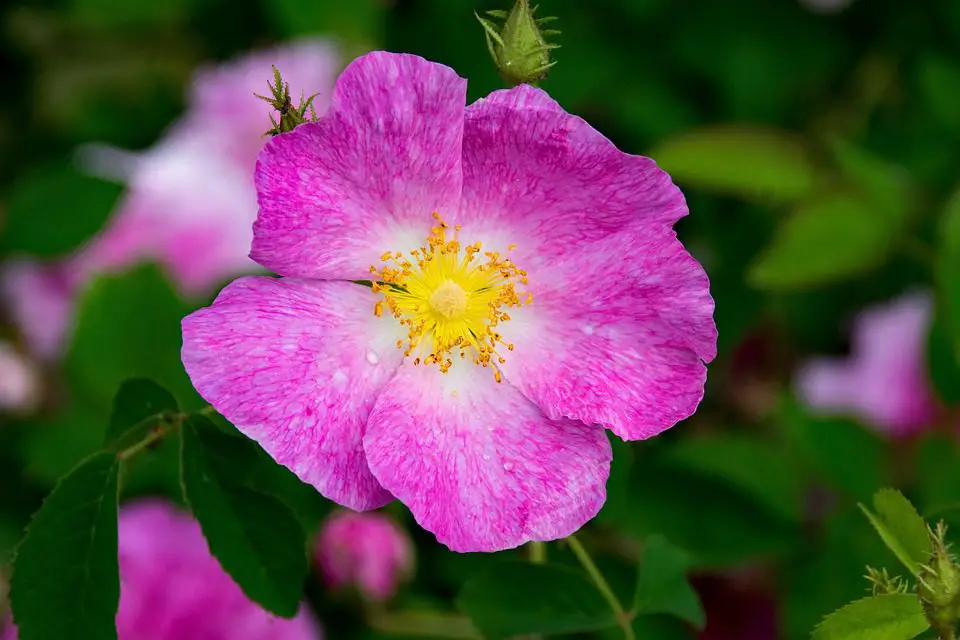
Perhaps Rosa gallica is the most exquisite, water-loving flowering plant. Its bright pink flowers scream romantic appeal.
What Is a Rain Garden?
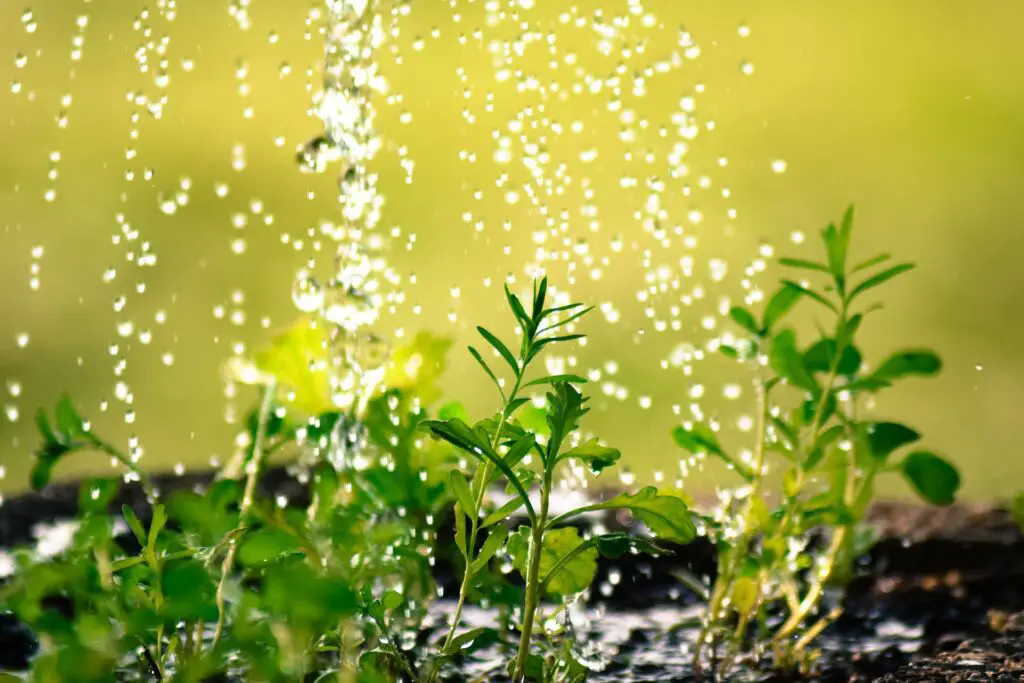
Rain gardens are small, man-made depressions filled with plants (usually the plants mentioned earlier in the previous sections). They are placed in strategic locations to collect rainwater runoff from hard surfaces (like a driveway, roof, parking lot, sidewalk, or roadway).
Right after a storm, rain gardens collect a few inches of water. Instead of rushing off to the road or drainage structures, this water seeps into the surrounding soil.
The Advantages of Having a Rain Garden for Dealing with Water Runoff
If water runoff is a problem, you will benefit from a rain garden. Many beautiful plants will improve your yard’s aesthetic appeal and add functionality by helping with water absorption.
Aside from that, a rain garden also:
- eliminates any standing water from your lawn,
- cuts down the number of mosquitos that breed,
- minimizes the risk of flooding on your property,
- establishes an environment for birds and butterflies to live in, and
- filters out pollutants from runoff.
REFERENCES
https://water.unl.edu/article/lawns-gardens-landscapes/stormwater-runoff-issues-landscapes
https://www.ag.ndsu.edu/trees/handbook/th-3-17.pdf
https://ucanr.edu/sites/Elderberry/Growing/Site/
https://www.fs.fed.us/database/feis/plants/shrub/saldis/all.html#9
https://extension.psu.edu/pussy-willow-a-valuable-native-plant
https://hort.ifas.ufl.edu/database/documents/pdf/tree_fact_sheets/nyssyla.pdf
https://www.fs.fed.us/database/feis/plants/tree/acerub/all.html
https://homeguides.sfgate.com/much-water-new-maple-tree-60339.html
https://www.rhs.org.uk/plants/13901/primula-vulgaris-(pr-prim)/details
https://www.britannica.com/plant/Iris-plant-genus#ref273368
www.tulane.edu/~bfleury/diversity/labguide/mossfern.html
https://www.britannica.com/plant/cattail
https://plants.ces.ncsu.edu/plants/typha-latifolia/
https://www.extension.iastate.edu/news/yard-and-garden-bee-balm
https://hortnews.extension.iastate.edu/faq/how-often-should-i-water-bee-balms
https://www.rhs.org.uk/plants/94206/rosa-gallica-var-officinalis-(g)/details
https://www.nrcs.usda.gov/wps/PA_NRCSConsumption/download?cid=stelprdb1248876&ext=pdf

